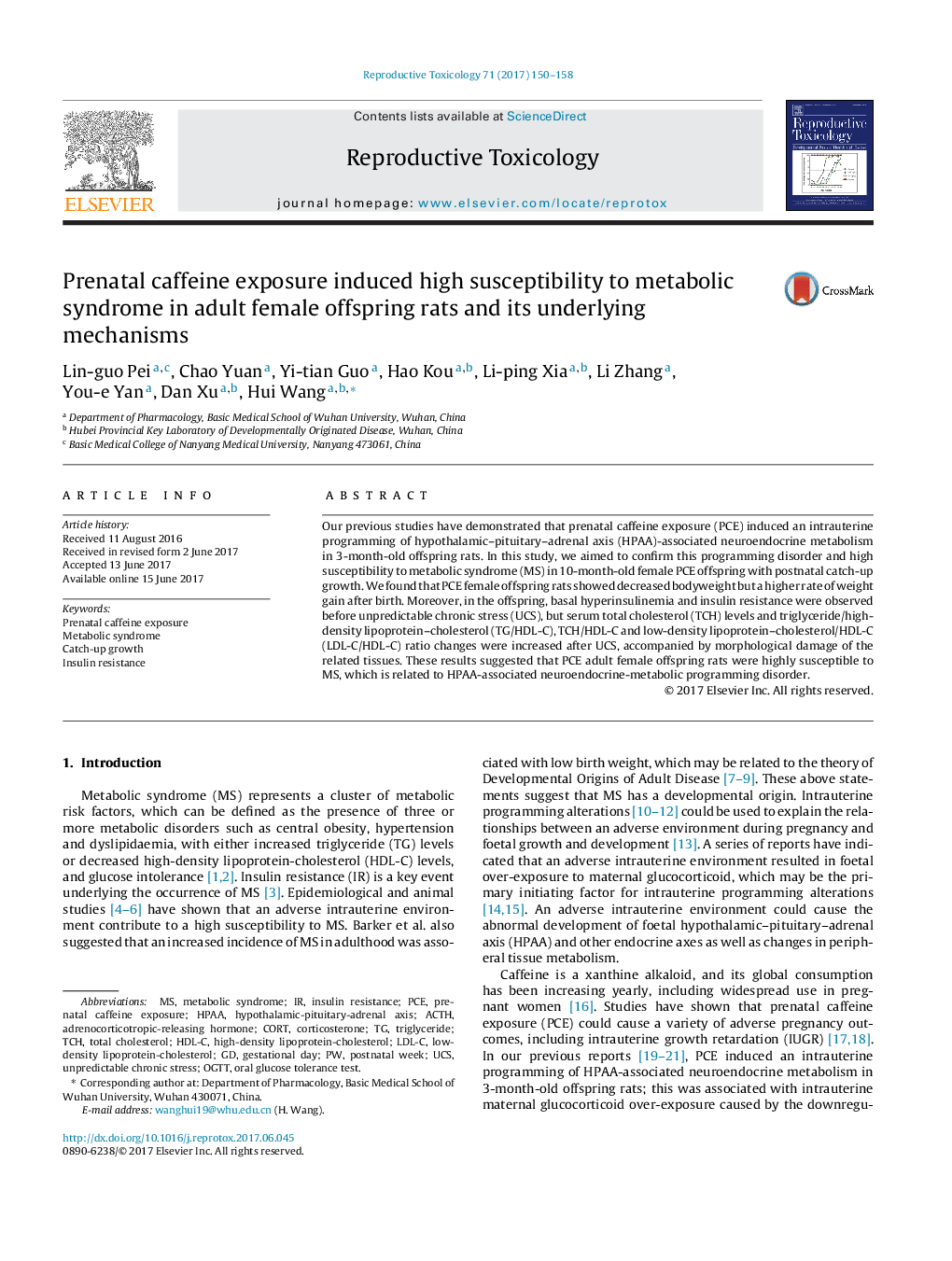| Article ID | Journal | Published Year | Pages | File Type |
|---|---|---|---|---|
| 5561447 | Reproductive Toxicology | 2017 | 9 Pages |
Abstract
Our previous studies have demonstrated that prenatal caffeine exposure (PCE) induced an intrauterine programming of hypothalamic-pituitary-adrenal axis (HPAA)-associated neuroendocrine metabolism in 3-month-old offspring rats. In this study, we aimed to confirm this programming disorder and high susceptibility to metabolic syndrome (MS) in 10-month-old female PCE offspring with postnatal catch-up growth. We found that PCE female offspring rats showed decreased bodyweight but a higher rate of weight gain after birth. Moreover, in the offspring, basal hyperinsulinemia and insulin resistance were observed before unpredictable chronic stress (UCS), but serum total cholesterol (TCH) levels and triglyceride/high-density lipoprotein-cholesterol (TG/HDL-C), TCH/HDL-C and low-density lipoprotein-cholesterol/HDL-C (LDL-C/HDL-C) ratio changes were increased after UCS, accompanied by morphological damage of the related tissues. These results suggested that PCE adult female offspring rats were highly susceptible to MS, which is related to HPAA-associated neuroendocrine-metabolic programming disorder.
Keywords
TCHUCSOGTTPCEHDL-CLDL-CACTHprenatal caffeine exposureHPAaOral glucose tolerance testUnpredictable chronic stresstriglyceridegestational dayMetabolic syndromeHypothalamic-pituitary-adrenal axisInsulin resistancepostnatal weektotal cholesterolHigh-density lipoprotein-cholesterolLow-density lipoprotein-cholesterolCORTCorticosteroneCatch-up growth
Related Topics
Life Sciences
Environmental Science
Health, Toxicology and Mutagenesis
Authors
Lin-guo Pei, Chao Yuan, Yi-tian Guo, Hao Kou, Li-ping Xia, Li Zhang, You-e Yan, Dan Xu, Hui Wang,
